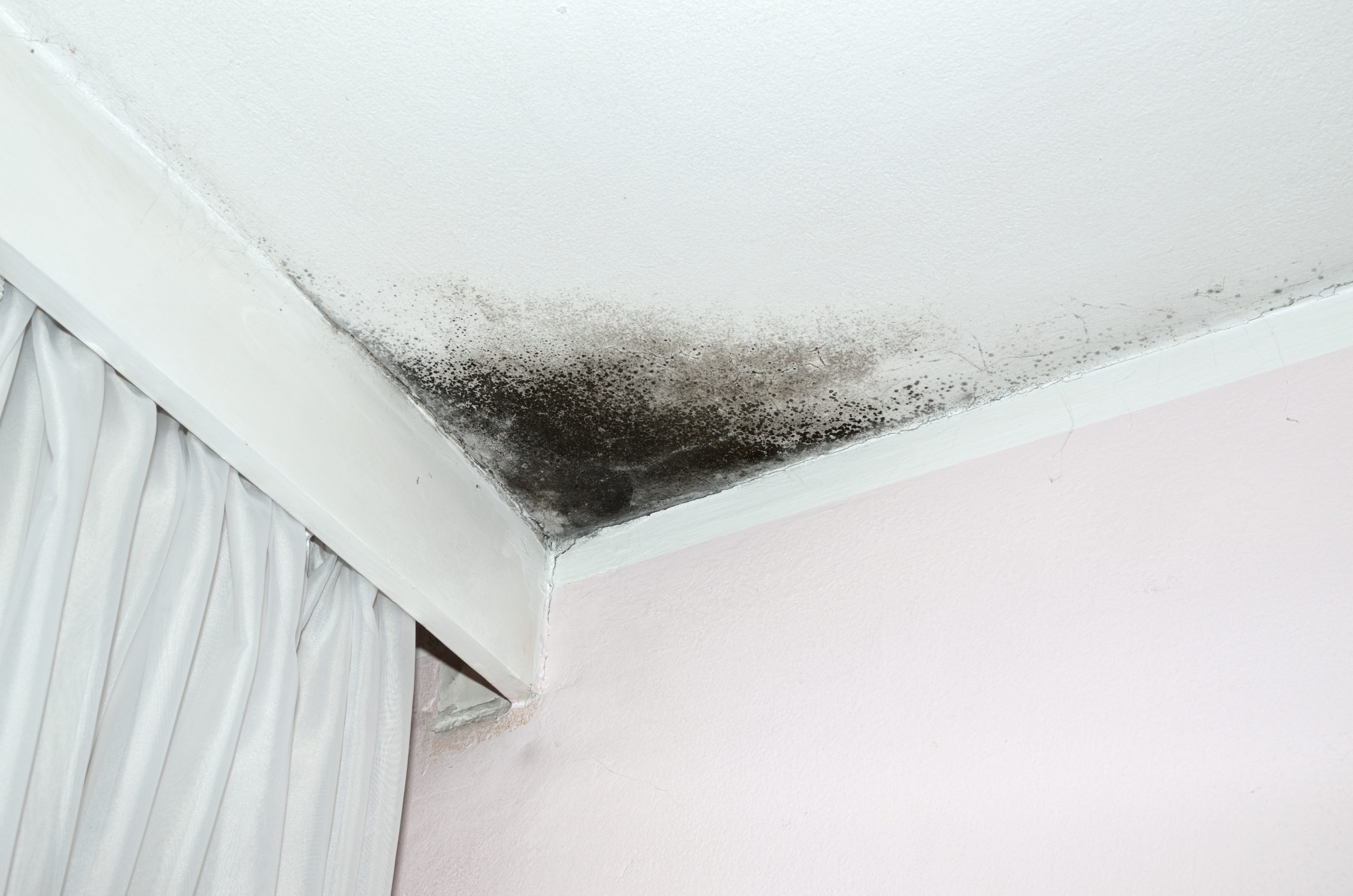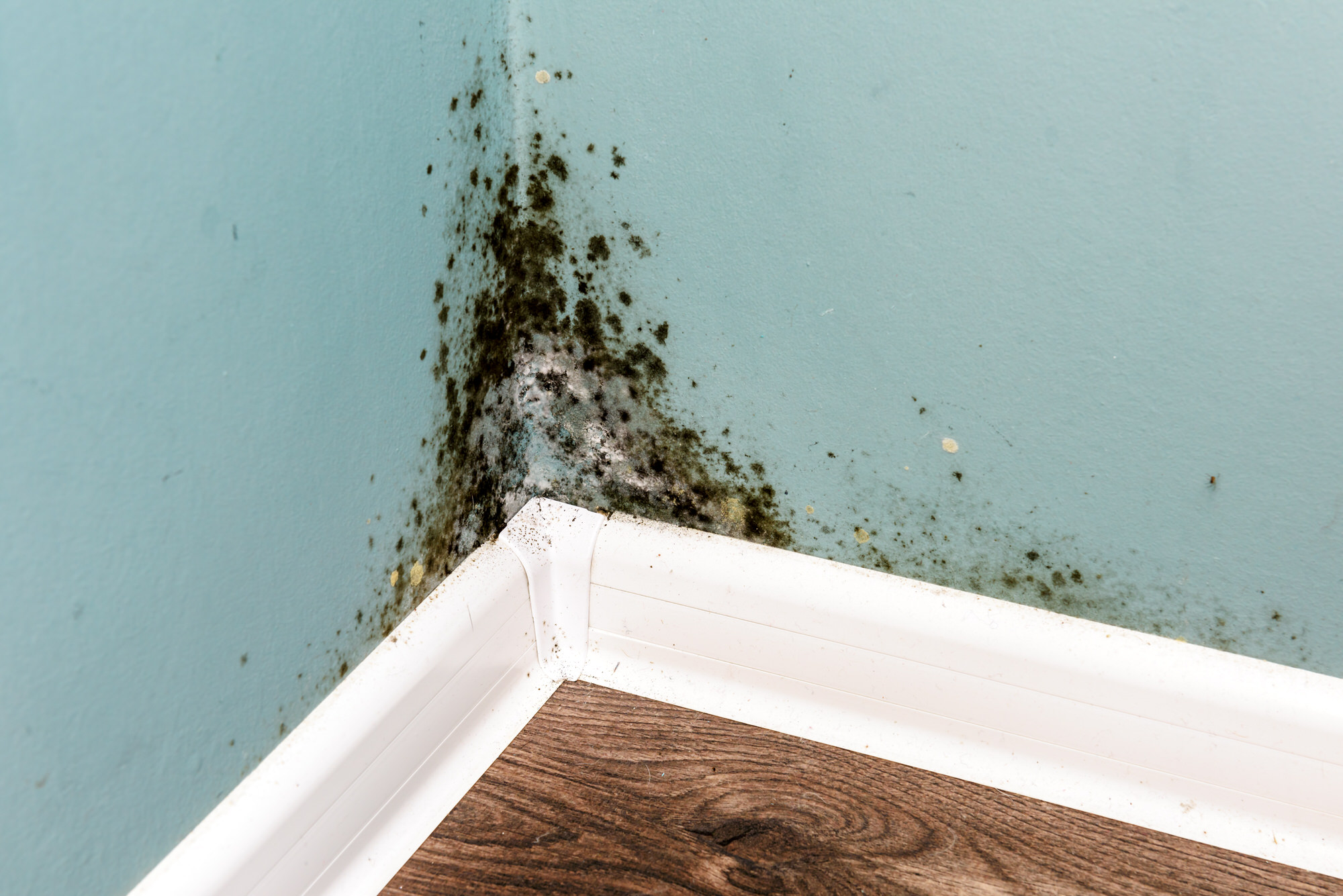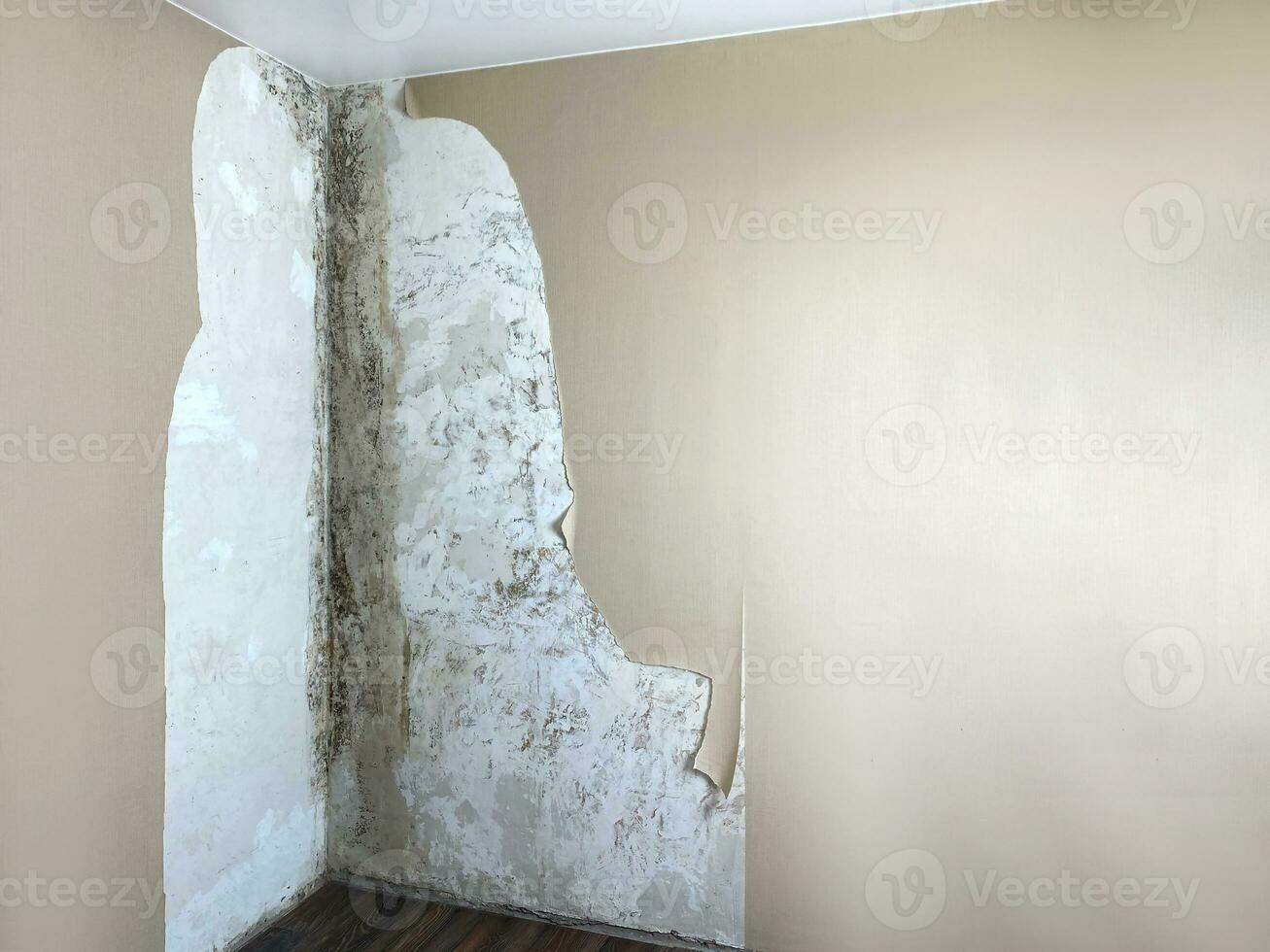Identifying Black Mold: Black Mould In Corner Of Bedroom Ceiling

Black mold, a common problem in many homes, can be a significant health hazard. It often appears in damp, dark areas like corners, and in bedrooms, it’s frequently found in the corners of the ceiling.
Appearance of Black Mold
Black mold, scientifically known as Stachybotrys chartarum, is a type of fungus that thrives in damp environments. It typically appears as dark, greenish-black patches or colonies, often with a slimy or velvety texture. It can grow on various surfaces, including drywall, wood, paint, and wallpaper. In a bedroom ceiling corner, it may appear as a dark discoloration, often spreading outwards from the corner.
Characteristics of Black Mold
Black mold is characterized by several distinct features that help in its identification:
- Color: Black mold is typically dark greenish-black, though it can sometimes appear gray or brown.
- Texture: It can have a slimy, velvety, or powdery texture, depending on the surface and its growth stage.
- Smell: Black mold often has a musty, earthy, or even pungent odor.
- Growth: It thrives in damp, dark, and poorly ventilated areas, making corners of rooms, especially bedrooms, a common location.
Health Risks Associated with Black Mold Exposure
Exposure to black mold can pose serious health risks, particularly for individuals with allergies, asthma, or compromised immune systems. The potential health risks associated with black mold exposure include:
- Respiratory problems: Mold spores can trigger allergic reactions, leading to symptoms like sneezing, coughing, wheezing, and difficulty breathing.
- Skin irritation: Contact with black mold can cause skin rashes, itching, and inflammation.
- Eye irritation: Mold spores can irritate the eyes, causing redness, itching, and watery eyes.
- Neurological symptoms: In some cases, exposure to black mold can lead to headaches, dizziness, fatigue, and cognitive problems.
- Other health issues: In rare instances, prolonged exposure to black mold can contribute to more severe health problems, including respiratory infections, memory loss, and even neurological damage.
Common Causes of Black Mold Growth in Bedrooms, Black mould in corner of bedroom ceiling
Black mold growth in bedrooms is often caused by a combination of factors:
- Moisture: Excess moisture is the primary cause of black mold growth. This can be due to leaks, condensation, or high humidity levels.
- Poor ventilation: Inadequate ventilation allows moisture to accumulate, creating a favorable environment for mold growth.
- Temperature: Black mold thrives in warm, humid environments, making bedrooms, especially those with inadequate ventilation, susceptible.
- Organic materials: Mold feeds on organic materials, such as wood, drywall, and even dust. These materials provide a food source for mold growth.
Managing Black Mold

Managing black mold effectively requires a combination of proper cleaning techniques, safety precautions, and a thorough understanding of the mold’s growth conditions. Removing black mold is crucial for protecting your health and preventing further damage to your home.
Safety Precautions When Handling Black Mold
Handling black mold necessitates taking specific precautions to minimize exposure and potential health risks. It is essential to protect yourself and your family from the harmful effects of mold spores.
- Wear protective gear: Always wear a respirator mask with HEPA filtration, gloves, and eye protection when cleaning mold. These measures prevent inhalation of mold spores and direct contact with the affected area.
- Ventilate the area: Open windows and doors to improve ventilation and reduce the concentration of mold spores in the air. This helps to remove contaminated air and create a safer environment for cleaning.
- Avoid disturbing the mold: Avoid brushing or disturbing the mold as it can release more spores into the air, increasing exposure risks. Instead, use gentle cleaning methods and avoid creating dust.
- Keep children and pets away: Ensure children and pets are not present during the cleaning process to prevent accidental exposure to mold spores.
- Consult a professional: For extensive mold infestations or if you are unsure about handling the situation, consult a professional mold remediation specialist. They have the expertise and equipment to safely remove and prevent future mold growth.
Cleaning and Disinfecting the Affected Area
Cleaning and disinfecting the affected area involves a systematic approach to remove mold and prevent its recurrence. The following steps provide a comprehensive guide for effectively cleaning black mold from a bedroom ceiling.
- Prepare the area: Clear the area around the affected ceiling, removing furniture and belongings to ensure a clear workspace. Cover the floor with plastic sheeting or drop cloths to prevent mold spores from spreading.
- Remove loose mold: Use a damp cloth or sponge to gently remove loose mold from the ceiling. Avoid scrubbing or using harsh tools that could damage the surface.
- Apply a mold-killing solution: Mix a solution of bleach and water (1:10 ratio) in a spray bottle. Spray the affected area thoroughly, ensuring the solution covers all moldy areas. Let the solution sit for at least 10 minutes before rinsing.
- Rinse and dry: Rinse the area thoroughly with clean water to remove any remaining bleach solution and mold spores. Dry the ceiling completely with a towel or fan to prevent moisture buildup that could encourage mold growth.
- Repeat the process: Repeat the cleaning process as needed until all visible mold is removed. If the mold returns, it might indicate a moisture problem that needs to be addressed.
Recommended Cleaning Products for Black Mold Removal
Various cleaning products are available for black mold removal, each with its specific properties and effectiveness.
- Bleach: A common and effective disinfectant, bleach kills mold spores and can be used in a solution with water (1:10 ratio). However, bleach can damage certain surfaces, so test it in an inconspicuous area first.
- Borax: A natural cleaner with antifungal properties, borax can be mixed with water to create a cleaning solution. It is effective in removing mold and preventing its regrowth.
- Tea tree oil: A natural essential oil with antifungal and antibacterial properties, tea tree oil can be diluted with water and applied to moldy surfaces. It is a safer alternative to bleach for sensitive surfaces.
- Commercial mold cleaners: Several commercially available mold cleaners are formulated to effectively remove mold and prevent its recurrence. Choose a cleaner specifically designed for mold removal and follow the manufacturer’s instructions.
Preventing Black Mold

Preventing black mold growth in your bedroom is crucial for maintaining a healthy living environment. Mold can trigger allergies, asthma, and other respiratory problems, especially in vulnerable individuals. This section provides practical tips and strategies for preventing future black mold growth.
Improving Ventilation
Proper ventilation is key to controlling moisture levels in your bedroom. Stagnant air allows moisture to accumulate, creating ideal conditions for mold growth.
- Open Windows Regularly: Fresh air circulation helps to remove excess moisture. Aim for at least 30 minutes of ventilation daily, even in colder months.
- Use Exhaust Fans: Install and use exhaust fans in your bathroom and kitchen to vent out steam and cooking odors.
- Consider a Whole-House Fan: A whole-house fan can help to draw out warm, moist air during the summer months, promoting better ventilation and reducing humidity.
Reducing Moisture Levels
Moisture is a major contributor to black mold growth. Here are some strategies for reducing moisture levels in your bedroom:
- Fix Leaks Promptly: Repair any leaky pipes, faucets, or appliances immediately. Water damage can create ideal breeding grounds for mold.
- Use Dehumidifiers: If you live in a humid climate or have a basement, a dehumidifier can help to remove excess moisture from the air. Place the dehumidifier in the most humid areas of your home, such as your bedroom or basement.
- Dry Clothes Outdoors or in a Well-Ventilated Area: Avoid drying clothes indoors, as this adds moisture to the air. If you must dry clothes indoors, use a well-ventilated area and run an exhaust fan.
Identifying and Addressing Potential Mold Triggers
By identifying and addressing potential mold triggers, you can significantly reduce the risk of future black mold growth.
- Check for Water Damage: Regularly inspect your bedroom for signs of water damage, such as damp spots, water stains, or peeling paint. These are indicators of potential mold growth.
- Monitor Indoor Humidity: Use a hygrometer to monitor the humidity levels in your bedroom. Ideally, the humidity level should be below 50%.
- Inspect Areas Prone to Moisture: Pay close attention to areas that are prone to moisture, such as corners, around windows, and under sinks. These areas should be regularly inspected and cleaned.
Sealing Cracks and Gaps
Cracks and gaps in walls and ceilings can provide entry points for moisture, creating opportunities for mold growth.
- Caulk and Seal: Use caulk to seal any cracks or gaps in walls, ceilings, and around windows and doors. Caulking prevents moisture from seeping in and creating a breeding ground for mold.
- Use Weather Stripping: Install weather stripping around windows and doors to prevent drafts and moisture intrusion.
- Repair Damaged Walls and Ceilings: Promptly repair any damaged walls or ceilings, as these can provide entry points for moisture.
Black mould in corner of bedroom ceiling – Black mould in the corner of your bedroom ceiling can be a real eyesore, and a potential health hazard. If you’re looking for a fresh start, perhaps consider a colour scheme that can help create a calming and inviting atmosphere.
A grey and violet bedroom can be a stylish and soothing choice, but remember to tackle the mould issue first to ensure a truly healthy and enjoyable space.
Black mold in the corner of your bedroom ceiling can be a serious issue, but it doesn’t have to be a design nightmare. A fresh coat of paint and a few strategic touches, like a grey accent chair for bedroom , can help you create a stylish and inviting space despite the mold.
Remember, a good cleaning and some ventilation can also help prevent future mold growth, so tackling the problem head-on is the best way to ensure a healthy and beautiful bedroom.
